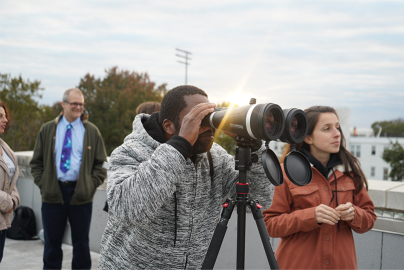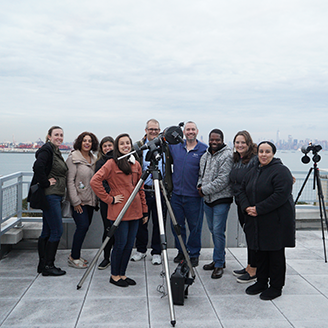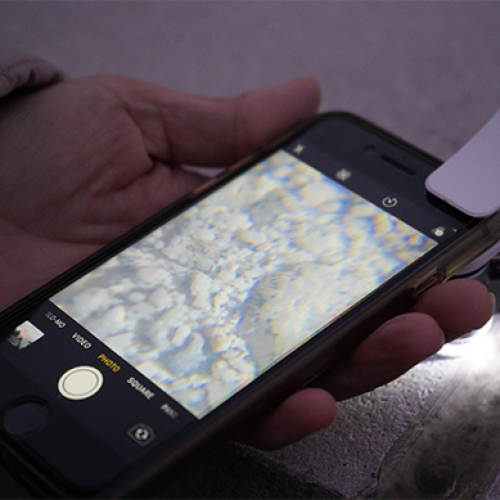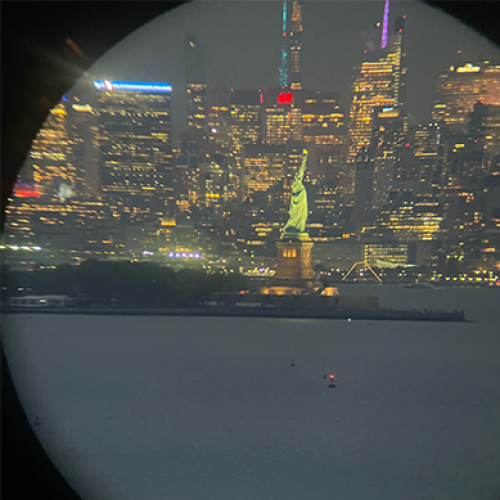
Curiosity in the sky is an important part of the study of astronomy.
Teachers are often looking for ways to capitalize on their students' interest (and their own) by showcasing different ways they can observe the Sun, Moon, and available planets. Stargazing is one of those ways - the activity of looking up at celestial objects in the sky not just with the unaided eye, but with binoculars or telescopes too. Stargazing is usually best done far away from light pollution, but that didn't stop MƒA teachers from hopping on the Staten Island Ferry last fall to head to a "Rooftop Star Party" MƒAdventure.

Led by MƒA Master Teachers David Deutsch, Alia Jackson, and Jay Lang, MƒA teachers gathered on the rooftop of Curtis High School to explore the night sky using telescopes and cell phone apps, all while gazing at the Manhattan skyline. "Our mission was to make as many teachers as possible aware of just how much you can see in the night sky, even in New York City," said Alia. "Dark skies are nice, but not necessary."
The group used Alia's Schmidt Cassegrain telescope which at first seemed intimidating to those with little experience, but after a short tutorial, teachers were excited to take turns examining the skies overlooking Brooklyn and Manhattan. “This telescope uses mirrors to ‘fold’ the image, so it looks short and squat. You're able to "track" an object by moving along only one axis without having to constantly adjust it," said David, who also has a telescope through the Rooftop Variables program at Columbia University. "Unfortunately we had a cloudy night, but when it's clear, it's easy to watch the moon, or Jupiter, or Saturn. Instead we settled for the best skyline in the world - not a bad second option!"
Teachers connected on their shared interest about everything beyond Earth's atmosphere. They discussed key astronomy concepts using simple resources such as a magnifying glass that attaches to an iPad or iPhone and is adaptable to use in the classroom. Jason says MƒAdventures like this one and other astronomy-based MƒA courses provide teachers with the knowledge they need to teach their students, giving the next generation access to the wonders of the sky.
“Teaching teachers to teach students about our dynamic sky overhead has a multiplicative effect on the development of aerospace fields,” he added. “If courses like this ultimately influence even one graduating New Yorker to consider an aerospace career, then scores more from the city may follow in their footsteps.”

View of the sky via a magnifying glass that attaches to an iPhone.

View of the Manhattan skyline via the Schmidt Cassegrain Telescope.